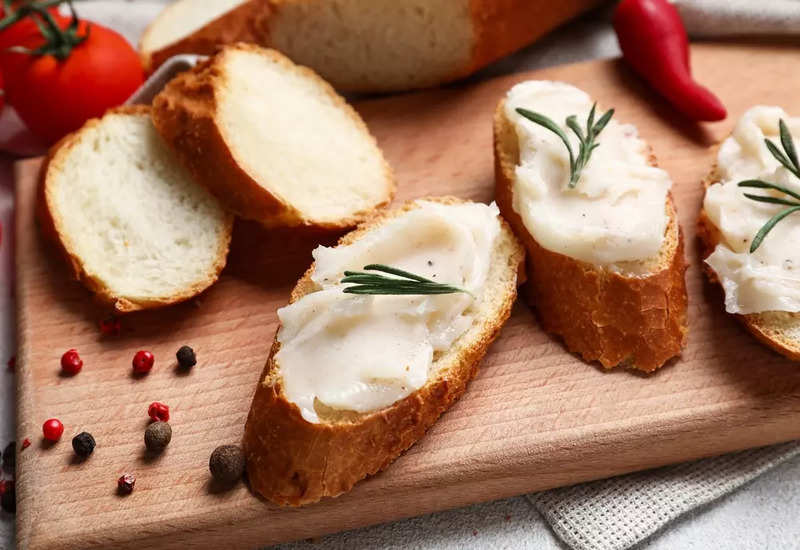Lard is a staple in baking. With a melting point higher than butter, it ensures a crisp and flakey pastry. It's hard to imagine that something that adds so much flavour and taste to baked goodies is actually pig fat.
Around the eighteenth century, lard was a staple cooking fat in the west. But in recent years, lard has disappeared from the home kitchens after being replaced by vegetable shortening. Its declining popularity could also be linked to some unsavoury facts about its health hazards.
Is lard healthy?
A high-fat diet rich in lard is linked to obesity, inflammation and oxidative stress in the human body. That being said, lard has been lauded lately for its health benefits, especially in the paleo diet circle. There has been some debate about its saturated fat content as well.
Versatile and cheap, lard is also considered a good source of vitamin D and has zero trans fat. Additionally, fatty acid-rich lard is also said to be a "brain food".
Here are some of its benefits.
- Good source of vitamin D: Consuming lard may help in overcoming vitamin D deficiency since its considered one the best sources of the micronutrient.
- Helps fight calcium deficiency: Vitamin D helps in the absorption of calcium from food. Hence, including lard in the diet can be a healthy way to combat calcium deficiency.
- Could support heart health: Despite its bad rep, lard contains 48% monosaturated fats, which could help lower bad cholesterol.
- Rich source of choline: Lard also contains choline, a rare nutrient that helps protect against Alzheimer’s disease and maintains liver health.
- Other benefits of lard
- Has zero trans fats
- Is not processed
- Has a high smoke point
- Has a longer shelf life
- Lowers risk of heart disease when combined with low card, low sugar diet
The best way forward will be to use lard in moderation since the jury is still out about its benefits. It's always better to err on the side of caution when it comes to one's health. Experts suggest sourcing lard from pasture-raised pigs who have not been injected with hormones and antibiotics.
Nutritional composition of lard
Nutrients in 100 gm of lard:
| Nutritional Fact | Measure %(DV) |
| Calories | 898 |
| Fat | 160% |
| Cholesterol | 32% |
| Sodium | 1% |
| Cobalamin | 1% |
| Vitamin D | 0.5% |
| Calcium | 0% |
| Magnesium | 0% |
| Vitamin B6 | 0% |
| Iron | 0% |
| Vitamin C | 0% |
| Protein | 0% |
| Fibre | 0% |
| Carbohydrates | 0% |
How to use lard
Lard is best used in baking flakey, delicious pie crusts and pastry crusts. Apart from baking, the fat can also be used for grilling, frying and roasting thanks to its sky-high smoke point (204 degree C). Some even use lard in lieu of butter for extra crispy toasts.
Lard can also be an excellent fat to season cast iron pans and protect them against rust.
Apart from culinary uses, lard can also be used as an emollient to soften skin and lips in the dry winter months.
Disclaimer:
“The recipes, food, its nutritional value or any other information are developed/shared by expert professionals as per their skill levels. The website shall not be responsible for any consequences arising as a result of using or following any information given in this video/article. Viewers discretion advised.”
